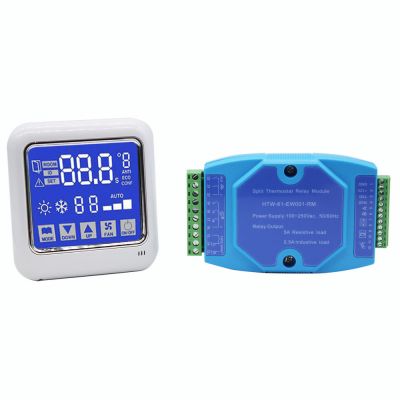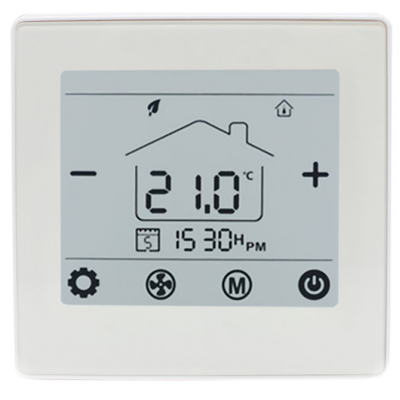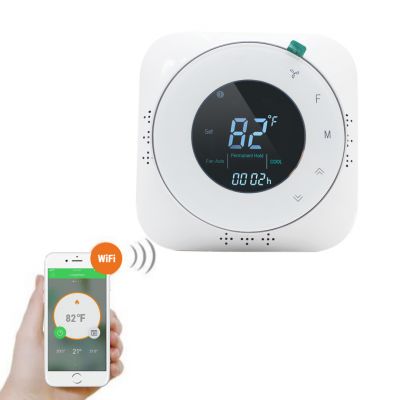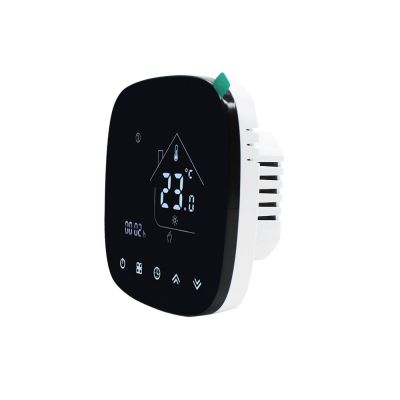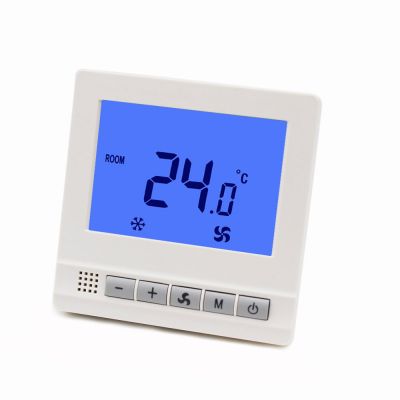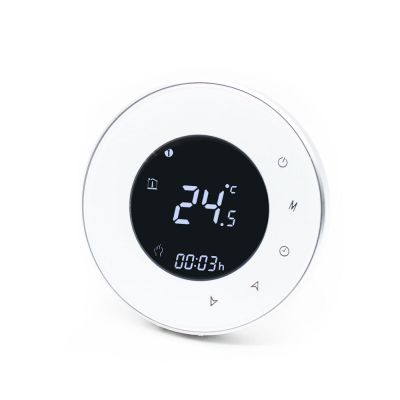El mejor termostato para bomba de calor con calefacción auxiliar
Calibración de temperatura: -7 a -1 ° C (-13 a -2 ℉) <br />
Diferencial de conmutación de modo automático: 0 a 5 ° C (0 a -9 ℉) <br />
Recordatorio de cambio de filtro: 0--5 (mes) <br />
Temperatura de banda muerta: 1 a 5 ° C (2 a 9 ℉) <br />
Brillo de luz de fondo en espera: 3 - 99 (brillo) <br />
Configuración de retardo para salida: 1--5 minutos
General
Heat pump thermostats almost always have the words “heat pump” right in the name of the device and are designed to gradually raise to the programmed temperature one degree at a time. That means, for example, a heat pump thermostat with an overnight setting of 65 degrees and a daytime setting of 70 degrees calculates what time the system needs to start working to gradually reach 70 degrees by the designated time. Many heating systems these days use programmable thermostats that are little more than alarm clocks, adjusting temperatures based on programmed time slots. These devices generally aren’t heat pump specific and can, like manual adjustments, because the backup heating element to kick in until the programmed temperature is reached.
Video
Features
When temperatures are adjusted to a higher setting, of three degrees or more, most heat pump systems kick on their emergency heating system, usually an electric resistance heating element, similar to a large toaster. This auxiliary heat helps the heat pump reach the desired temperature in a short time frame. Unfortunately, the electric backup heating is far less energy efficient than your heat pump, resulting in higher energy bills with frequent use. You can address this problem by programming your heat pump thermostat.
Other Heat Pump Thermostats

Typical Wiring Diagram
Applications
Certifications

About Us
Hotowell is an ISO9001:2008 certified factory and CE audited supplier. Ensure that our products have higher quality and more attractive designs. Our mission is to attract more customers from all over the world to use our products through continuous efforts. One of our main advantages: we not only provide standard products but also provide customized products according to customers' samples and drawings. We look forward to becoming your partner.

FAQ
Q: Can I buy as many thermostats as I like?
A: The number of thermostats is limited to the number of existing thermostats in the home. Not all thermostats must be replaced. Additional smart thermostats may be available without a subsidy.
Q: How can I tell if I have a conventional system or heat pump?
A: It is best to consult the documentation from your equipment manufacturer, however, if your heat is either gas or oil then your system is typically conventional and if your system is all-electric then it is usually a heat pump.




